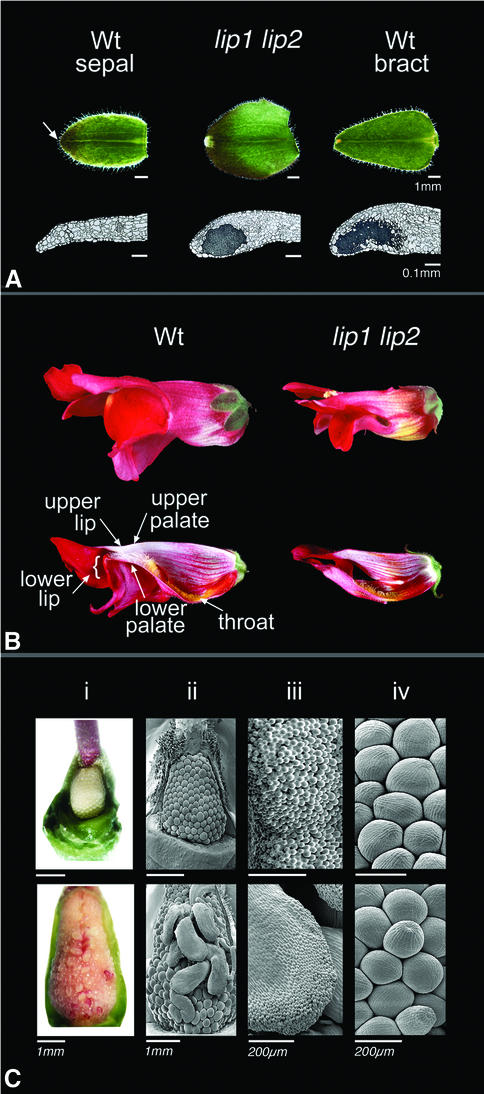Fig. 2. Phenotype of the lip1 lip2 double mutant. (A) Comparison of wild-type sepals, bracts and whorl 1 organs of the lip1 lip2 double mutant. Longitudinal sections of the tips show that lip1 lip2 sepals have glands (dark grey areas) normally found in the tips of bracts and leaves, but not in wild-type sepals. The first whorl organs are also larger in lip1 lip2 than in wild type. The upper scale bar = 1 mm and the lower scale bar = 0.1 mm. The arrow points to tip of wild-type sepal. (B) Lip and palate growth is affected in the lip1 lip2 double mutant. Entire flowers (upper) or flowers that have been cut open longitudinally are shown in side view (stamens and carpels removed from cut flowers). Regions that make up the upper and lower palate and lips, as seen in the wild type, are either missing or very much reduced in lip1 lip2. (C) Carpel development is altered in the lip1 lip2 double mutant. Compared with the wild-type ovary (upper panel), mutant ovules (lower panel) often display style-like outgrowths (i and ii). These are tipped with cells that resemble stigmatic cells of wild type (iii). Not all ovules are transformed into stylar projections, but may still appear abnormal in shape (iv). Scale bars = 1 mm for live tissue in (i). In all cases, the ovary walls have been removed. Scale bars = 1 mm in (ii) and 200 µm in (iii and iv) for SEMs.

An official website of the United States government
Here's how you know
Official websites use .gov
A
.gov website belongs to an official
government organization in the United States.
Secure .gov websites use HTTPS
A lock (
) or https:// means you've safely
connected to the .gov website. Share sensitive
information only on official, secure websites.
